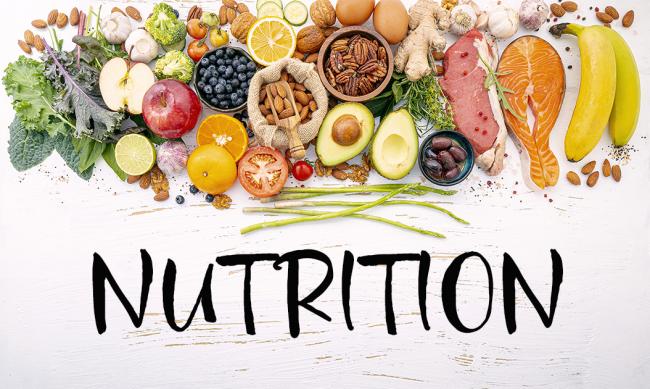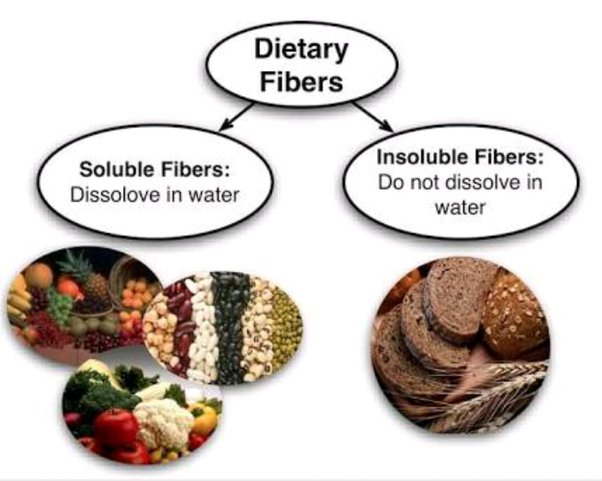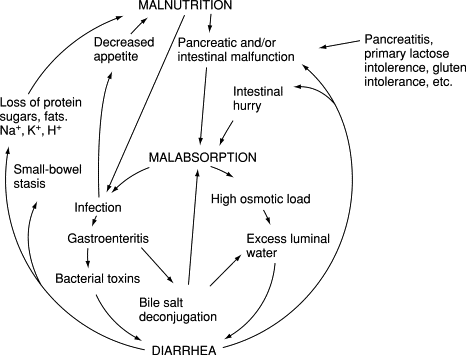Vital Nutritional Alchemy: Organism Energy and Growth Journey
CHAPTER 8
Nutrition

Understanding the fundamental process of how organisms acquire, process, and utilize food forms the essence of nutrition. Nutrition is the intricate journey of obtaining, absorbing, and transforming food into essential elements for growth and energy.
Organisms acquire nutrients, the building blocks of sustenance, to fuel their vital functions and promote growth. Autotrophic organisms craft their sustenance from environmental elements like water, carbon dioxide, and minerals, fashioning food that fuels their growth and energy needs. Conversely, heterotrophic organisms rely on consuming food from other sources to meet their nutritional requirements for growth and energy.

This exploration of nutrition unveils the diverse pathways through which organisms source and convert elements into vital energy and materials for their sustenance and development.
UNDERSTANDING THE CONCEPTS
Q1. What are the effects of the lack of nitrate and magnesium ions on plant growth?

The absence of nitrate ions profoundly impacts plant growth by impeding essential processes. Nitrate serves as a primary source of nitrogen, vital for synthesizing amino acids and proteins. When lacking, plants exhibit stunted growth, reduced leaf development, and compromised overall vigor. This deficiency hampers the creation of essential enzymes, affecting metabolic reactions critical for plant growth and health.
Conversely, a scarcity of magnesium ions disrupts chlorophyll formation, crucial for photosynthesis. As an integral component of chlorophyll, magnesium plays a pivotal role in capturing light energy. Its deficiency triggers chlorosis, where leaves turn yellow due to reduced chlorophyll production. This inhibits the plant’s ability to harness sunlight for energy, hindering growth and decreasing productivity.
Both nitrate and magnesium deficiencies profoundly impact plants, impairing fundamental processes essential for growth, metabolism, and overall health. Addressing these deficiencies is crucial to ensure optimal plant development and productivity.
Q2. How are inorganic and organic fertilizers important in agriculture?

Inorganic and organic fertilizers both play pivotal roles in agriculture, albeit through different mechanisms. Inorganic fertilizers, synthesized from minerals or chemicals, provide essential nutrients directly to plants in easily accessible forms. They offer precise control over nutrient composition, enabling tailored supplementation based on specific plant needs. These fertilizers are quick-acting and efficient in addressing immediate nutrient deficiencies, enhancing plant growth and productivity.
On the other hand, organic fertilizers, derived from natural sources like compost, manure, or plant residues, enrich the soil with organic matter. They facilitate microbial activity and improve soil structure, fostering a healthier and more sustainable environment for plants. Organic fertilizers release nutrients slowly over time as they decompose, enhancing soil fertility, moisture retention, and nutrient availability in the long term. They also aid in preventing soil erosion and supporting beneficial soil organisms.
Both types of fertilizers are integral to modern agriculture. Inorganic fertilizers offer rapid nutrient supplementation, addressing immediate plant needs, while organic fertilizers contribute to soil health and long-term sustainability by improving soil structure and fostering a more diverse and robust ecosystem. A balanced approach, combining the benefits of inorganic and organic fertilizers, is often employed to optimize crop yield while promoting soil fertility and sustainability in agriculture.
Q3. Draw a table that can show sources, energy values, and functions of carbohydrates, proteins
and fats.
Here’s a table showcasing sources, energy values, and functions of carbohydrates, proteins, and fats:

| Nutrient | Sources | Energy Value (per gram) | Functions |
|---|---|---|---|
| Carbohydrates | Fruits, vegetables, grains | 4 calories | Primary energy source, fuel for body and brain |
| Proteins | Meat, dairy, legumes | 4 calories | Building blocks for tissues, enzymes, hormones |
| Fats | Oils, nuts, dairy | 9 calories | Energy storage, insulation, cell structure |
This table highlights the diverse sources from which carbohydrates, proteins, and fats can be obtained, their energy values per gram, and their primary functions within the body.
Q4. How are vitamins A, C, and D important in our diets?
Vitamins A, C, and D play crucial roles in maintaining optimal health and well-being within our diets.

Vitamin A is essential for vision, immune function, and cell growth. It supports the health of the eyes, aiding in low-light and color vision while also promoting the integrity of skin and mucous membranes, which act as barriers against infections. Additionally, Vitamin A is vital for the proper functioning of the immune system, helping the body fight off illnesses and infections.
Vitamin C, also known as ascorbic acid, is a powerful antioxidant that supports the immune system, aiding in the body’s defense against infections. It is crucial for collagen production, which is integral for wound healing, and maintaining healthy skin, bones, and blood vessels. Vitamin C also enhances the absorption of iron from plant-based foods and helps protect cells from damage caused by free radicals.
Vitamin D plays a fundamental role in maintaining healthy bones and teeth by aiding in the absorption of calcium and phosphorus from the intestines. It also supports proper immune function, regulates cell growth, and reduces inflammation. Vitamin D is unique as it can be synthesized by the body through exposure to sunlight, and it is also found in certain foods like fatty fish and fortified dairy products.
A deficiency in these vitamins can lead to various health issues. Lack of Vitamin A may cause vision problems and weaken the immune system. Insufficient Vitamin C intake may lead to scurvy, characterized by fatigue, swollen gums, and skin problems. Vitamin D deficiency can result in weakened bones, increased susceptibility to infections, and poor bone development in children.
Ensuring a balanced diet that includes sources rich in vitamins A, C, and D is crucial for supporting overall health, boosting immunity, and maintaining various bodily functions. Incorporating a variety of fruits, vegetables, dairy, and fortified foods can help meet the body’s vitamin requirements for optimal health.
Q5. Which foods contain calcium and iron and what role do these minerals play in our bodies?

Calcium-rich foods include dairy products like milk, cheese, and yogurt, as well as leafy greens such as kale and spinach, fortified cereals, tofu, and certain nuts and seeds like almonds and sesame seeds. Iron-rich foods encompass red meat, poultry, fish, lentils, beans, tofu, fortified cereals, spinach, and dried fruits like raisins and apricots.
Calcium is crucial for building and maintaining strong bones and teeth. It also supports proper muscle function, nerve transmission, and aids in blood clotting, ensuring wounds heal properly. Insufficient calcium intake can lead to weakened bones, increasing the risk of osteoporosis.
Iron is essential for the production of hemoglobin, the protein in red blood cells that carries oxygen from the lungs to the rest of the body. It also plays a role in supporting a healthy immune system and proper cognitive function. Iron deficiency can result in anemia, causing fatigue, weakness, and impaired cognitive function.
Ensuring adequate intake of these minerals through a balanced diet is vital for maintaining overall health, supporting bone strength, facilitating oxygen transport, and ensuring optimal bodily functions. Incorporating a variety of calcium and iron-rich foods into meals can help meet the body’s mineral requirements for optimal health and vitality.
Q6. Why are water and dietary fibers considered important in our diets?

Water and dietary fibers hold immense significance in our diets due to their essential roles in maintaining overall health and well-being.
Water is crucial for various bodily functions, serving as a vital component in almost every physiological process. It aids in digestion, absorption of nutrients, and the transportation of essential compounds throughout the body. Water helps regulate body temperature, lubricates joints, and acts as a medium for waste removal through urination, sweating, and bowel movements. Insufficient water intake can lead to dehydration, causing fatigue, headaches, and impaired cognitive function.
Dietary fibers, found in fruits, vegetables, whole grains, nuts, and seeds, play a pivotal role in digestive health. They add bulk to stool, aiding regular bowel movements and preventing constipation. Fibers also promote satiety, helping control appetite and manage weight. Moreover, they assist in regulating blood sugar levels by slowing down the absorption of sugars into the bloodstream. Additionally, dietary fibers support heart health by lowering cholesterol levels and reducing the risk of cardiovascular diseases.
Both water and dietary fibers are integral for maintaining a healthy digestive system, supporting hydration, regulating bodily functions, and reducing the risk of various health conditions. Ensuring an adequate intake of water and incorporating fiber-rich foods into the diet are essential for promoting overall health and well-being.
Q7. Define a balanced diet. How would you relate it to age, gender, and activity?

A balanced diet refers to a nutritional approach that provides all the essential nutrients in appropriate proportions to support overall health and well-being. It includes a variety of foods from different food groups to ensure the body receives adequate amounts of nutrients like carbohydrates, proteins, fats, vitamins, and minerals.
Age, gender, and activity level influence the composition and quantity of nutrients needed for optimal health. For instance, the nutritional requirements of children and adolescents differ from those of adults or elderly individuals. Children and teenagers require more nutrients for growth and development, including calcium for bone health and iron for proper cognitive development.
Gender also plays a role in determining nutritional needs. For instance, women may need more iron during their reproductive years due to menstrual losses, while men may require more calories and protein due to higher muscle mass.
Activity level is another crucial factor. Those who engage in high levels of physical activity may require more carbohydrates for energy, increased protein for muscle repair, and adequate hydration to replace fluids lost through sweat.
Tailoring a balanced diet to accommodate these factors involves adjusting nutrient intake based on individual needs. It’s about considering age-related nutritional needs, addressing gender-specific requirements, and adjusting nutrient intake based on activity levels to ensure the body receives the right balance of nutrients for optimal health and performance.
Q8. Describe how protein-energy malnutrition, mineral deficiency diseases, and overtaking of nutrients are the major forms of malnutrition.

Protein-energy malnutrition occurs when there’s a severe lack of protein and/or calories in the diet. This leads to various conditions such as kwashiorkor and marasmus, causing muscle wasting, stunted growth, weakened immunity, and developmental issues, particularly in children.
Mineral deficiency diseases arise when the body lacks essential minerals like iron, iodine, zinc, or calcium. For instance, iron deficiency can lead to anemia, causing fatigue and weakness. Iodine deficiency can result in goiter or impaired cognitive development. Similarly, inadequate zinc intake may weaken the immune system.
Over intake of nutrients, often termed as overnutrition or excessive nutrient intake, occurs when individuals consume nutrients, particularly fats, sugars, or certain vitamins, in amounts that exceed the body’s requirements. This can lead to obesity, diabetes, cardiovascular issues, and other health complications.
These major forms of malnutrition, whether due to inadequate intake or excessive consumption of nutrients, can significantly impact overall health, leading to various health conditions and impairments. Ensuring a balanced and varied diet while meeting individual nutritional needs is crucial in preventing these forms of malnutrition and maintaining optimal health.
Q9. How would you advocate the unequal distribution of food as the major factor that contribute to famine.
The unequal distribution of food stands as a significant contributing factor to famine, amplifying its devastating impact on vulnerable populations. Famine often arises not solely due to absolute food scarcity but largely due to the unequal access and distribution of available food resources.
In regions affected by famine, the issue isn’t always a lack of food production or availability on a global scale but rather inequitable distribution systems. Political instability, economic disparities, conflict, and social inequalities often hinder the fair allocation of food resources. This results in certain groups or regions facing acute food shortages while others have plenty.
Moreover, global food distribution systems might prioritize profitability over addressing food insecurity in famine-prone areas. This can lead to food being diverted away from regions in dire need due to various economic and logistical reasons, exacerbating the crisis.
Advocating against unequal food distribution in the context of famine involves addressing systemic issues, advocating for fair and efficient distribution systems, and promoting policies that prioritize equitable access to food resources for all populations. Addressing underlying issues such as poverty, conflict resolution, and improving infrastructure for food distribution are critical steps toward mitigating the impact of famine caused by unequal food distribution.
Q11. Describe swallowing and peristalsis
Swallowing is a complex process that involves the voluntary and involuntary coordination of muscles and nerves to move food or liquid from the mouth into the stomach. It consists of several stages: oral preparatory phase, oral phase, pharyngeal phase, and esophageal phase.
During the oral preparatory phase, food is chewed and mixed with saliva, forming a bolus. The tongue helps shape the bolus and moves it toward the back of the mouth in the oral phase. Sensory receptors in the throat trigger the swallowing reflex in the pharyngeal phase, signaling the soft palate to close off the nasal passages and the larynx to elevate to protect the airway. The food bolus moves into the esophagus through muscular contractions in the esophageal phase.
Peristalsis is the coordinated, involuntary muscle contraction and relaxation that propels food through the digestive tract. In the esophagus, peristalsis helps move the food bolus toward the stomach. It involves a sequential contraction of circular and longitudinal muscles in the esophageal wall, creating a wave-like motion that pushes the food downward. The lower esophageal sphincter relaxes to allow the bolus to enter the stomach, and then it contracts to prevent the contents of the stomach from refluxing back into the esophagus.
This intricate process of swallowing and peristalsis ensures that food is properly transported from the mouth to the stomach, allowing for efficient digestion and absorption of nutrients while safeguarding the airway from food or liquid entry. Dysfunction in these processes can lead to difficulties in swallowing (dysphagia) or conditions like gastroesophageal reflux disease (GERD).
Q12. Briefly give the signs and symptoms, causes, treatments , and prevention of diarrhoea, constipation, and ulcer.
Diarrhea:
- Signs and symptoms: Frequent loose or watery stools, abdominal cramps, dehydration, fever.
- Causes: Infections, food intolerances, medications, intestinal disorders.
- Treatment: Oral rehydration solutions, adjusting diet, and medications to address underlying causes.
- Prevention: Hygiene practices, clean water consumption, proper food handling, vaccination where applicable.
Constipation:
- Signs and Symptoms: Infrequent bowel movements, difficulty passing stools, abdominal discomfort.
- Causes: Low fiber diet, dehydration, lack of physical activity, certain medications.
- Treatment: Increased fiber intake, hydration, exercise, laxatives, or stool softeners when needed.
- Prevention: Balanced diet with fiber-rich foods, adequate hydration, and regular physical activity.
Ulcer:
- Signs and Symptoms: Burning stomach pain, bloating, nausea, vomiting, heartburn, indigestion.
- Causes: H. pylori bacteria, excessive NSAID use, stress, smoking, certain foods.
- Treatment: Antibiotics for H. pylori, acid-suppressing medications, lifestyle changes.
- Prevention: Avoiding irritants like NSAIDs, managing stress, healthy diet, and quitting smoking.
These conditions can vary in severity, and seeking medical advice for persistent or severe symptoms is crucial for proper diagnosis and treatment.
In The Last But not Least
“Maintaining optimal digestive health is pivotal for overall well-being. Understanding common gastrointestinal issues like diarrhea, constipation, and ulcers involves recognizing their signs, causes, treatments, and preventive measures. Diarrhea, characterized by loose stools, often results from infections or food intolerances, requiring rehydration and proper medication. Conversely, constipation, marked by infrequent bowel movements, can stem from a low-fiber diet or dehydration, often alleviated by lifestyle adjustments. Ulcers, causing stomach pain and discomfort, may be due to H. pylori bacteria or NSAID use, necessitating antibiotics and lifestyle modifications for relief. Prevention includes healthy habits like balanced diets, hydration, and avoiding triggers. Prioritizing digestive wellness ensures a healthier, more comfortable life.”
1 comment